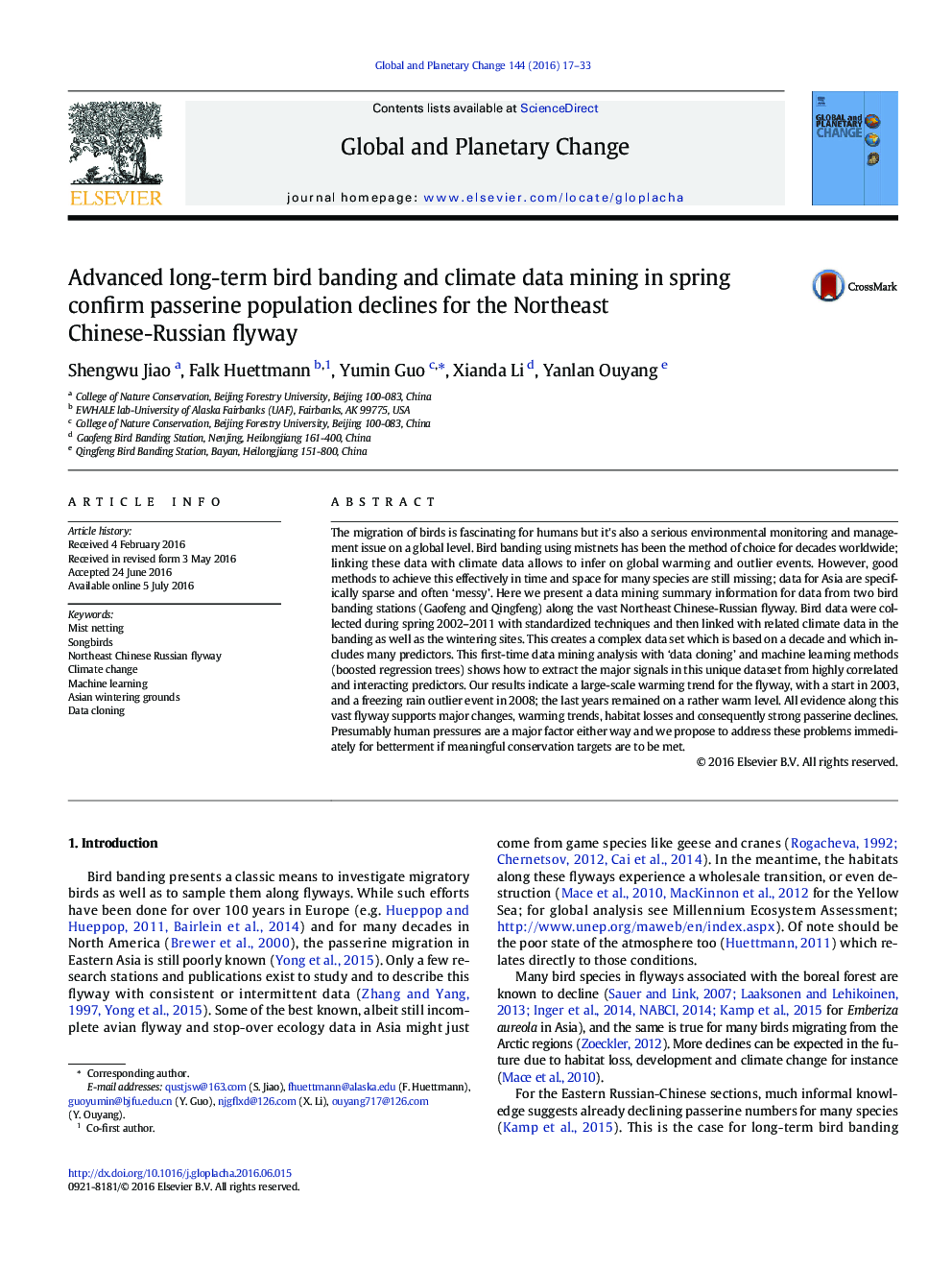| کد مقاله | کد نشریه | سال انتشار | مقاله انگلیسی | نسخه تمام متن |
|---|---|---|---|---|
| 4463266 | 1621638 | 2016 | 17 صفحه PDF | دانلود رایگان |
• Great and unique research involving an international China-US cooperation
• New long-term field data
• An exciting analysis method for complex climate data using a block design (called ‘data cloning’)
• Based on TreeNet (boosted and regression trees; machine learning)
• Quantified massive declines for many songbirds in Asia
The migration of birds is fascinating for humans but it's also a serious environmental monitoring and management issue on a global level. Bird banding using mistnets has been the method of choice for decades worldwide; linking these data with climate data allows to infer on global warming and outlier events. However, good methods to achieve this effectively in time and space for many species are still missing; data for Asia are specifically sparse and often ‘messy’. Here we present a data mining summary information for data from two bird banding stations (Gaofeng and Qingfeng) along the vast Northeast Chinese-Russian flyway. Bird data were collected during spring 2002–2011 with standardized techniques and then linked with related climate data in the banding as well as the wintering sites. This creates a complex data set which is based on a decade and which includes many predictors. This first-time data mining analysis with ‘data cloning’ and machine learning methods (boosted regression trees) shows how to extract the major signals in this unique dataset from highly correlated and interacting predictors. Our results indicate a large-scale warming trend for the flyway, with a start in 2003, and a freezing rain outlier event in 2008; the last years remained on a rather warm level. All evidence along this vast flyway supports major changes, warming trends, habitat losses and consequently strong passerine declines. Presumably human pressures are a major factor either way and we propose to address these problems immediately for betterment if meaningful conservation targets are to be met.
Journal: Global and Planetary Change - Volume 144, September 2016, Pages 17–33
